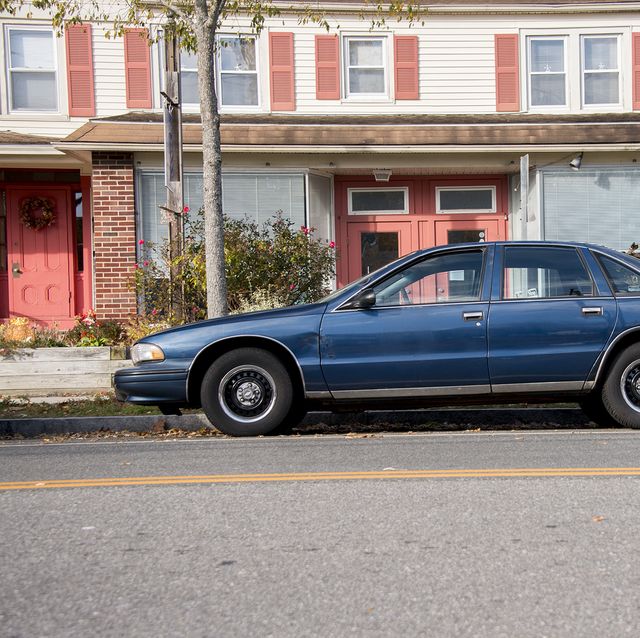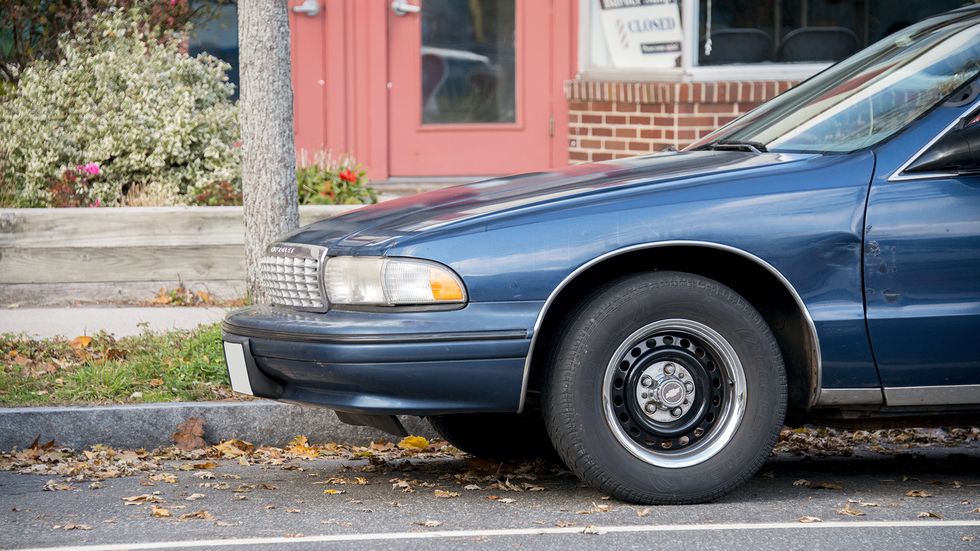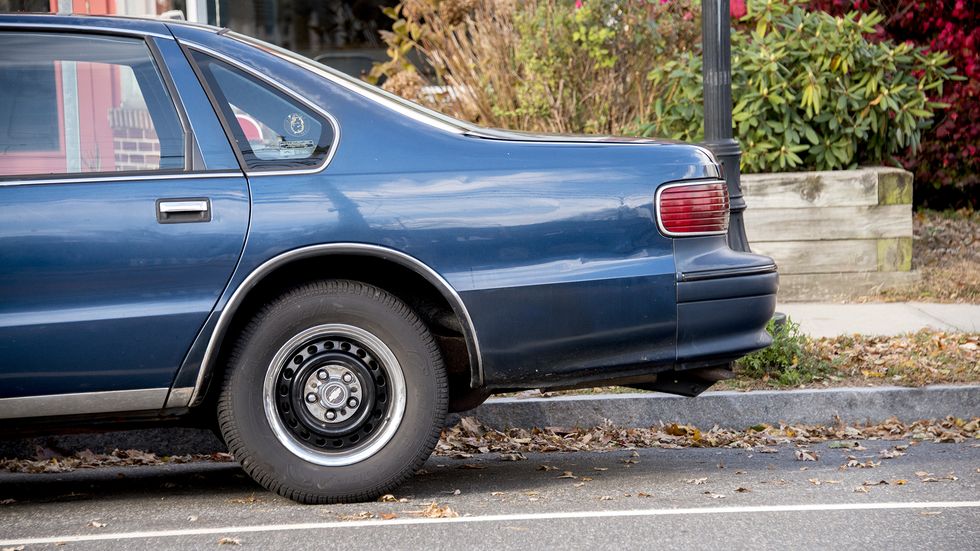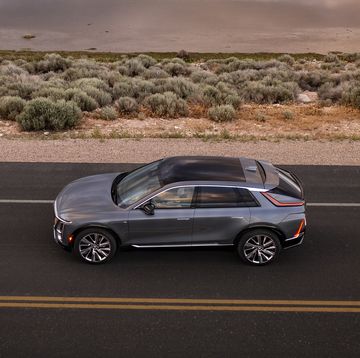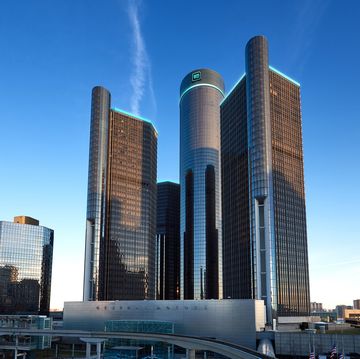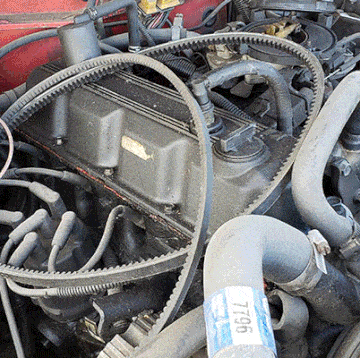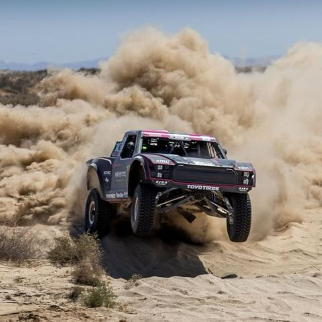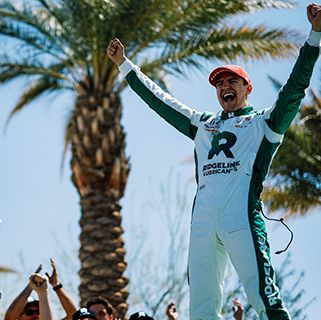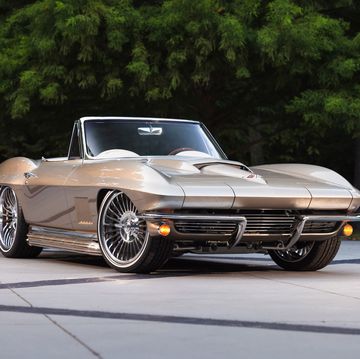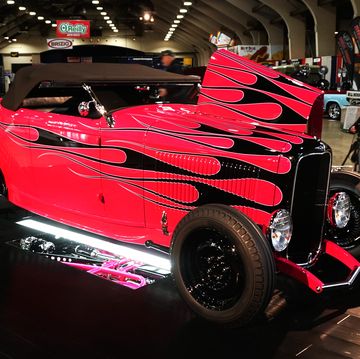You'd have no problem finding a tidy Chevy Impala SS from the mid 1990s for sale on any day of the week, but the situation is a little different when it comes to the Caprice sedan or station wagon. Chevy's big sedan arrived just when big, non-luxury American sedans seemed to be at a crossroads: GM's own SUVs were continuing their rise, and it seemed like big Chevrolet sedans still had some life left in them.
Of course, 1990 was also a different time. Most still defaulted to sedans as the default family car, so when the Caprice debuted that year, it seemed to have a lot going for it, at least on paper.
As new as the 1990 Caprice seemed on the outside, quite a few of its underpinnings were actually direct carryovers from the previous generation, which debuted all the way back in 1977. The aerodynamic body received some mixed reviews, as did the related Buick Roadmaster sedan that arrived a year later, but some versions of the B-body seemed to have been received well, including the Buick Roadmaster wagon.
The Caprice sedans, on the other hand, seemed to have been largely destined for taxi and police fleets, and were mostly used up by the end of the decade. By the late 1990s they were hard to find, at least outside of Michigan.
And that's what makes the Caprice sedan a bit of a rarity now.
"The stylish Caprice is expected to match the industry with modest gains in sales in '92, for 22% of the large automobile segment," dealer-aimed GM infographics of the time promised. "Caprice represents the ultimate in an affordable full-size luxury car. Aerodynamic in shape, the 1992 Caprice and Caprice Classic Sedans have sleek exterior lines without sacrificing traditional luxury, comfort or spaciousness. The spacious six-passenger Caprice has more total interior room than any Mercedes-Benz, BMW or Chrysler sedan."
The Caprice certainly had size on its side, offering seating for three up front. But those modest gains in sales didn't quite materialize over time, as it was still the recession outside when the Caprice arrived in the spring of 1990. Just how GM privately pictured the rest of the decade unfolding for this segment from the vantage point of 1990 is a question: Did it consider this segment to be doomed in the long term, or did it see a rebound by the year 2000?
"Caprice Wagon has no direct competitor for '92, outside of GM, and offers formidable V8 rear-wheel-drive towing ability," GM noted. "In addition, the LTZ sport package for Caprice Sedans will appeal to many younger buyers who have not previously considered Caprice."
On the issue of the younger buyers we can perhaps only smile at this point, but it's worth noting that among the domestic automakers, it really was just GM that was still cranking out large station wagons. Ford had dropped full-size wagons, offering the Taurus and Escort wagons and their Mercury twins in the 1990s, but it did not field a Crown Victoria wagon. GM, on the other hand, produced wagons under three separate brands based on the 1991 B-body, including the Roadmaster and the much rarer Olds Custom Cruiser. So it certainly had a hold on this segment, even if it was shrinking rapidly, or losing ground to foreign wagons as they were rapidly becoming more popular with status-conscious buyers.
Just who were 1991 Caprice buyers?
"Caprice attracts two important groups of buyers. The first is the traditional Caprice owner body, typically over 55 and often retired," GM promised its Chevy dealers. "This group demands a large, full-size luxury car that's dependable and affordable—the precise definition of Caprice. The second group is slightly younger, has a little more disposable income, and is drawn to Caprice's dramatic styling and advanced engineering features."
GM doesn't quite note here just what those "advanced engineering features" are, but this is perhaps a time when a 5.0-liter V8 with electronic fuel injection and a floaty suspension counted as advanced engineering.
What else could GM tell us about Caprice owners?
"Research indicates that Caprice owners are more likely than the average customer to be interested in the following: Eating out with friends or family. Country music. Seeing America. Camping. Outdoor gardening. Watching TV sports/VCR movies. Power boating. Bowling."
Of course, we have to wonder just what the demographic that did not enjoy eating out with friends or family was buying, or how large the non-TV-watching audience was in the early 1990s, and what they were buying instead.
Just how many of these predictions about Caprice buyer demographics were correct and which ones were merely wishful thinking is quite obvious by now, but it's safe to say that most remaining examples of the Caprice are now in the hands of enthusiasts and custom car builders.

Jay Ramey grew up around very strange European cars, and instead of seeking out something reliable and comfortable for his own personal use he has been drawn to the more adventurous side of the dependability spectrum. Despite being followed around by French cars for the past decade, he has somehow been able to avoid Citroën ownership, judging them too commonplace, and is currently looking at cars from the former Czechoslovakia. Jay has been with Autoweek since 2013.
